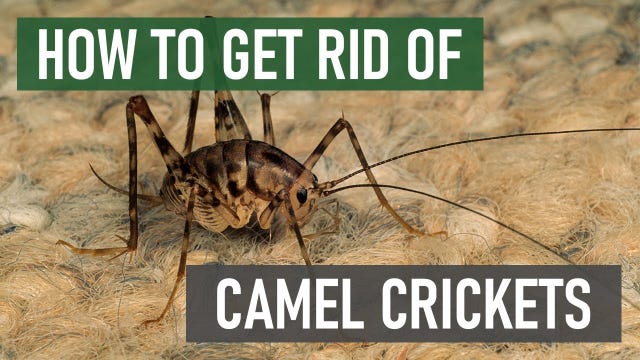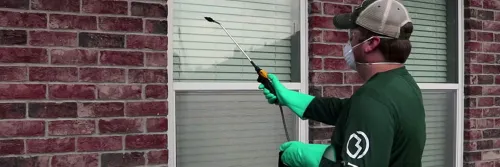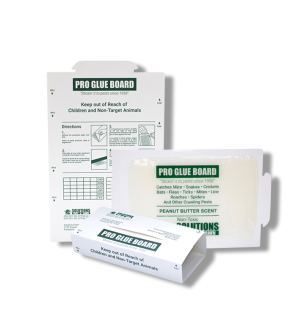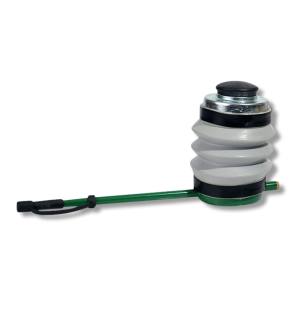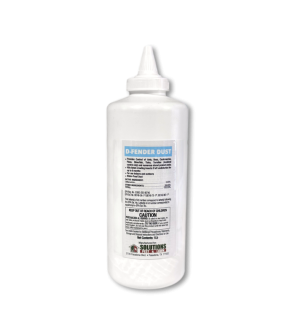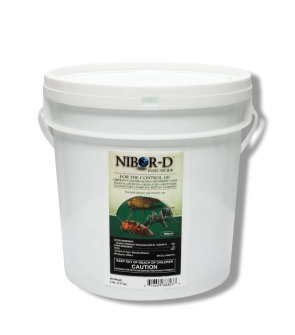Gain access to personalized product screening, the best pricing, rewards, and more!
Most Effective Products
Camel Cricket Control: How to Get Rid of Camel Crickets
This page is an expert guide on getting rid of camel crickets using the products and methods our experienced pest control specialists suggested. Follow this guide and use the recommended products; we guarantee you will successfully eliminate camel crickets.
Camel crickets are a pest known by many names—cave crickets, spider crickets, or sprickets, to name a few. No matter what they are called, they can irritate homes they invade. While they are not a harmful threat to people, they can damage clothing, upholstery, and fabrics once inside a home due to their chewing habits.
Camel crickets look similar to your average cricket, but they do not produce the typical noisy chirping that is often heard, nor do they have wings to fly. Instead, one of their key characteristics is leaping when they feel threatened. Camel crickets are occasional invaders and may venture into a home when the temperatures drop or there is very dry weather, and they are looking for moisture.
If you are dealing with an infestation of camel crickets, your fabrics and clothing may be at risk. Read on to learn more about this pest and how to get rid of these pests using our four-phase process.
Identification

Before you can proceed with treatment, you will need to be certain that you are facing a camel cricket infestation. Misidentification leads to using the wrong treatment method, which in turn wastes time and money. Listed. below are some general characteristics to aid in knowing what camel crickets look like:
- Camel crickets resemble spiders at first glance because of their six long spider-like legs larger than their body. This is why they have been nicknamed spider crickets or sprickets. They have beige and brown-colored bodies and range between half an inch to 1.5 inches in body length. They have a hump-back appearance, which is how they got their name.
- Even though camel crickets belong to the cricket family, they lack the signature noise crickets are known for. Camel crickets do not harm humans directly because they don’t bite, and neither do they carry diseases. However, they are known to leave behind droppings, which can cause stains on floors and walls, and are an attractive food source for rodents.
Use the image and description above to identify camel crickets on your property properly. If unsure, contact us through email or phone, or stop by in person at one of our store locations with a pest sample in a sealable plastic container. This will help us assist in proper pest identification and suggest the appropriate treatment method.
Inspection

Before you apply control products for camel crickets, you need to know where they are located to treat them in the right spots.
Where To Inspect
Camel crickets prefer areas where there is excess moisture. When outdoors, scan for the pests around yard debris, leaf litter, mulch, soil beds, underpotted plants, and other damp areas. When inspecting indoors, look at your basement, garage, crawlspaces, and anywhere moisture develops.
What To Look For
Camel crickets are found where moisture is present, so you must scan moist or damp areas. Look for them in those moist areas of your home that we mentioned. It would be best to look for damage to fabrics like curtains and clothing since they like to chew on them. If you don't see the camel crickets themselves, observe if any camel cricket droppings are left behind.
Treatment
Once you have confirmed camel cricket activity, it is time to begin treatment. We recommend an indoor/outdoor treatment with Supreme IT. Supreme IT should be broadcast on your yard and home perimeter; indoors, you can apply insect traps and D-Fender Dust in crawl spaces.
Remember first to read all product labels, follow the application instructions on these labels, and stay safe by wearing personal protective equipment.
Step 1: Use Supreme IT Outdoors
Outdoors, we recommend using Supreme IT. Supreme IT Insecticide will be used to go over the lawn and to create an insecticidal barrier around your property to repel and prevent camel crickets from coming inside. The best thing about Supreme IT is that it will work for up to 3 months.
Calculate the square footage of your treatment area to help you determine how much Supreme IT you will need. To find the square footage, measure the length and width of the treatment area in feet, then multiply them together (length X width = square footage).
Apply 1 ounce of Supreme IT with a gallon of water in a pump sprayer to treat 1,000 square feet.
Once the appropriate amount is mixed in your sprayer, create a perimeter barrier around your structure by spraying 3 feet up and 3 feet from the foundation. Also, spray window frames, door frames, eaves, soffits, and electrical/plumbing penetrations.
Next, do a broadcast treatment. This means spray the Supreme IT all over your yard where you suspect camel crickets have been active. Start at the back of your lawn and go to the front, going over all the areas and using a fan spray nozzle setting to ensure good coverage.
Step 2: Apply D-Fender Dust Indoors
D-Fender Dust is a great insecticide for treating camel crickets because it is moisture-resistant, making it ideal for application in areas where camel crickets are gathering. It will also leave a residual (or long-term effects) lasting up to 8 months.
To use D-Fender Dust, you will need a handheld duster. Fill the duster halfway with D-Fender Dust, and leave plenty of space for the air to circulate. Apply in the cracks and crevices where you have noticed camel crickets. These places could be in voids where plumbing penetrates walls, along baseboards, or in weep holes if you have a brick home.
Step 3: Place Traps Around The Home
You can capture any straggler camel crickets on the loose in your home with the help of the Solutions Pro Glue Board. This board comes in increments of 12, so you can get excellent coverage of all those areas where camel crickets are active.
Peel the protective paper and place the traps in crawl spaces, basements, corners, and more. You can even fold the traps into a little shelter to attract camel crickets and try to use it as a hiding spot.
Monitor the traps, and if camel crickets have been caught, you can then easily dispose of the trap and the cricket.
Prevention
After the camel cricket infestation is eliminated, you don't want them making a return. Proceed with the following preventative measures to ensure camel crickets do not return:
- While a preventative treatment of Supreme IT around the exterior perimeter of your home is recommended every three months to keep camel crickets away, there are other preventative measures to reduce the likelihood of a re-infestation.
- Ventilating your home. Use dehumidifiers and fans to reduce moisture in your home and keep your house moisture-free. Use proper insulation and roof protection systems to prevent the rain from coming in and make your home moist and well-heated. If air is circulated properly, the springtails will not enter your home.
- Address moisture issues. Ensure all your faucets, water lines, and drain pipes are leak-free and no room in your house remains constantly damp, especially in the basement.
- Declutter your home and yard. It would be best if you made your house clutter-free. Too many unused, undusted books and other furniture fascinate crickets and insects, giving them a perfect place for hiding and breeding. Outdoors, reduce leaf litter, keep woodpiles away from your home, and keep your yard as neat and dry as possible.
Key Takeaways
What Are Camel Crickets?
- Camel crickets are not harmful insects, but they are known to enter homes during the winter in search of shelter and moisture.
How to Get Rid of Camel Crickets
- We recommend combining D-Fender dust indoors and Solutions Pro Glue Board. While outdoors, apply a broadcast treatment and perimeter barrier to Supreme IT Insecticide.
Prevent Camel Cricket Reinfestations
- A quarterly preventative treatment of Supreme IT can keep camel crickets away permanently. Alternatively, you can use several IPM methods to remove conducive conditions that attract camel crickets to your home.






